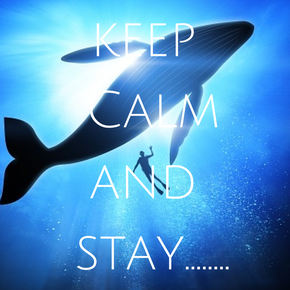|
I’m all about toolkits when it comes to leadership. You never know what you will face day in and day out, and it helps to have skills and exercises (and tools!) for navigating dynamic working environments.
Same thing is true for transitions. One of the earliest skills I was taught as an executive leader was the importance of having curiosity in your toolkit. In fact, cultivating curiosity is one of the behaviors that has helped me immensely in my career. So what’s the big deal about curiosity? What about the argument of following your intuition? Here are my thoughts on the matter. I remember going to an executive leadership training many years ago. One of the trainers stood in front of the room and told us all a story. I don’t remember the story very well, but the content is irrelevant to the point. The trainer only gave us part of the story and then asked us what happened next based on what we heard. We were given a few minutes to conjecture the next part of the story. We went around the room, each person telling a wildly different scenario of what they thought happened, from the main protagonist dying, to winning the Olympics. We were essentially left with our own thoughts as guides to make up the remainder of the story. What became apparent was this: People like to make things up. Period. Our tendency to make up stories about people, situations, scenarios and projecting our own versions of what happened was something that came easily to us. We were then read what really happened in the story. Of course it did not match any of our versions. As people and leaders, we make up our own version of reality with limited data all the time. I’m guilty of it too, in business and in life. Just the other day, I was supposed to take two people up north for a surf outing. The contact person was really responsive initially, and we had set a date. Two days prior, I sent him a confirmation and link to pay, and did not hear a word. Two days passed and it was now the night before our lesson, and still no word. I had already rented gear for the outing and did not know whether to show up or assume they just flaked. I thought perhaps they changed their minds, or maybe I wrote something that offended them in my e-mail. I had so many scenarios going through my head! When I woke up in the morning, I got a message from them saying their car had broken down and that had set them back on schedule tremendously. They apologized for the lack of response and said they would be there for the appointment. I racked my brain about what happened and started to assume my own version. Yet, in the end, it was just about car trouble. Staying curious would have allowed me to not stress so much, nor beat myself up. I can’t count the number of times something has happened in a relationship or with a person at work when I’d make up a reason for it in my head, only to find out - once I became curious and asked into a situation or a behavior - the reasons were so different from what I thought! By staying curious, you free yourself up from interpretations and stories and open yourself up to learning another’s perspective, or gaining insight into a situation. So what about the age-old advice of trusting your intuition? How do you reconcile staying curious while not getting sidetracked by your intuition? Here’s what I learned from one of my supervisors, Ann Betz, when I was being trained as a coach. Ann is world-renowned in the coaching field, and is responsible for translating the latest in neuroscience findings and applying the research and conclusions to coaching concepts and practices for The Coaches Training Institute. (I know - basically, the coolest job in the world!) What I learned from Ann is that there is an aspect of intuition having to do with how experiences are stored and patterned in our brain. Simultaneously, neuroscientists believe we have 3 recognized brains – the head brain, the heart brain and the gut brain. In fact, we have neurons in our gut and in our heart that take in information and send it to our central nervous system. That information is then sent up to the right hemisphere of our brain. But what ends up happening when we get these impulses is that the right side of our brain doesn’t necessarily know how to put the feelings into words. These intuitive “hits” as we call them, come to us as energy. Because they’re landing in a part of the brain that can’t necessarily translate the energy into words, it leaves us to use a different part of our brain to interpret it. And so comes our inclination for drawing conclusions based on previous experiences or patterns. What’s important to note here is that though the “hit” we get and impulse is real and true, it is also true that we may mistake our interpretation of it. This is why, as coaches, we are taught to plug into our intuition with clients, not to get attached to the interpretation of it, but rather to throw out what comes to us and explore it with the client and offer the client a chance to interpret it. Curiosity is crucial for us in this instance, as it releases us from judgment and assumptions. It helps our intuition become a tool of exploration to get to the truth about a situation. In short, you can use your curiosity when you are using your intuition; just don’t get attached to your interpretation of the intuition. So whether you get a gut feeling or are left with pieces of a puzzle you cannot make sense of, remain curious and open. If you are a leader, it can open up opportunities to get to clarity and can free you of unnecessary worry. If you are in transition, curiosity can open paths to new opportunities and experiences that you may not have expected. Here are some tips about how to manage your curiosity while also honoring your intuition: 1. When you feel triggered by something, give yourself time to decompress. Relax, and perhaps journal about your feelings. Talk to friends. Do not assume anything. When you are ready, approach the situation with genuine curiosity. 2. Segue into curiosity without judgment. A good way to start is, “I noticed x,y,z … I’m curious what happened.” Or, “I’m curious what you were thinking about when you said x,y,z.” How you see and experience a situation may be very different from how another person sees it. 3. If you’re in transition, make a list of all the things you’ve ever been curious about doing, and see if you can attach a value to each action. Perhaps you want to try horseback riding because it honors your value of feeling free. Perhaps you want to start a business because it honors your value of taking on a challenge. Once you’ve come up with a list and reasons why these things are meaningful to you, ask yourself what the first step would be in making those activities happen. Then, go do it! 4. Trust your instincts. When you get a hit on something, test out your intuition by saying. “I am feeling x,y,z,” or “I see x,y,z as I’m talking to you.” Follow it up with a question of “Does that land with you?” or “What do you see?” 5. Use your inner intuition and stay curious when opening yourself up to new paths. If you need to make a decision on something, try closing your eyes and imagine each decision as its own path. Go down one path that represents one decision. If you stayed curious, ask yourself what you see on that path as you move down it. How does it feel? Then try closing your eyes and going down another road that represents another decision, opening yourself up again to curiosity and what naturally may show up in your mind on that path. Journal about your experiences and be open to what you may discover!
2 Comments
10/30/2014 10:39:01 am
Very insightful. It is true that intuition and curiosity should go hand in hand, a really great leadership trait one should practice and keep. Thank you for the helpful tips and advice. Looking forward to more.
Reply
11/14/2014 06:33:33 pm
This is my first visit to your blog, your post made productive reading, thank you.
Reply
Leave a Reply. |
AuthorFarhana Huq Archives
June 2023
Categories
All
|
Copyright 2014-2024 Surf Life Executive Coaching



 RSS Feed
RSS Feed